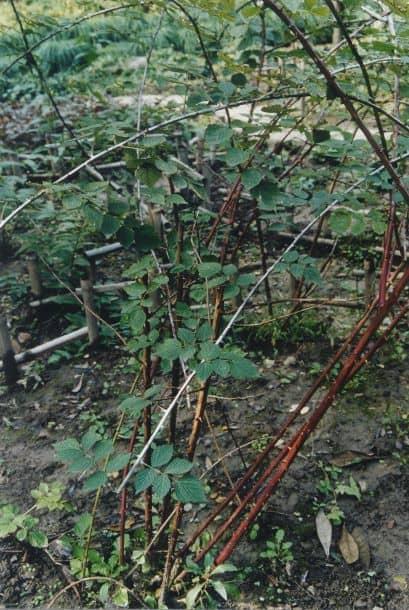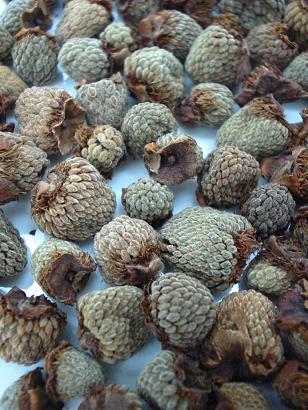Fructus Rubi
- Name
- Origin
- Where Does It Grow?
- Nature and Flavor
- Identified Active Components / Major Chemical Constituents
- Drug Actions in TCM

- Traditional Uses in TCM
- Pharmacological Actions
- Toxicology
- Administration and Dosage
- Adverse Effect, Side Effects and Cautions
- References
Name
Latin Name: Fructus Rubi
Common Name: Palmleaf raspberry fruit

Scientific Name: Rubus Chingii Hu.
Chinese Name: 覆盆子
Pinyin Name: fu pen zi
Origin
The unripe fruit of Rubus Chingii Hu; a shrub plant of the Rosaceae family.1
Where Does It Grow?
Palmleaf raspberry fruit is mainly distributed in Zhejiang, Fujian, Hubei and Guizhou provinces of China.1
Nature and Flavor
Palmleaf raspberry fruit is sweet and sour in flavor, slightly warm in nature, and mainly manifests its therapeutic actions in the kidney and liver meridians.1
Identified Active Components / Major Chemical Constituents
Identified chemical constituents of palmleaf raspberry fruit include organic acids such as citric acid, malic acid and saccharides. It also contains ellgic acid, β-sitosterol and vitamin A.2Drug Actions in TCM
Palmleaf raspberry fruit benefits the kidneys, consolidates essence and reduces excessive urination.1Traditional Uses in TCM
Pharmacological Actions
2. Promote Lymphocyte Proliferation
In vitro studies
Animal studies
Toxicology
Administration and Dosage
For decoction, the usual dose of palmleaf raspberry fruit is 5~10g.1
Adverse Effect, Side Effects and Cautions
Palmleaf raspberry fruit is contraindicated in individuals with urinary difficulty.
References
- Lui Daiquan, ed. Chinese Medicine. Shanghai Scientific and Technical Publishers, 2000-6.
- Li Jiashi, ed. Chinese Medicine Identification. Shanghai Scientific and Technical Publishers, 2000-6.
- Wu Yiluo. Bencao Congxin (New Compilation of Materia Medica), 1757AD.
- Li Shizhen, Bencao Gangmu (Compendium of Materia Medica) 1578AD.
- Jiangsu Modern Medicine College, ed. Pharmacopoeia of Chinese medicine, Volume II. Shanghai Scientific and Technical Publishers 1986-2698.
- Chen Kunhua, Fang Jun, Jin Hung, et al. Enhancement of Fructus Rubi extract ingredients on lymphocyte proliferation and its relationship with cyclic nucleotide. Shanghai Journal of Immunology 1995,15(5):302.
- Li Zhong ed. Modern Clinical Chinese Medicine. Beijing: China Medical Technological Publishers 1994, p241.
- Quoted in "Wang BX ed. Modern Pharmacological studies on Chinese Medicine. Tianjin Scientific Technology Publishing, 1999: 1248-1250"


